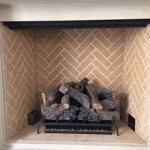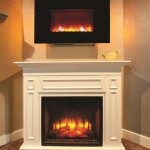Understanding Robertshaw Millivolt Gas Valve Fireplaces
Robertshaw millivolt gas valves are a common and reliable component in many residential fireplaces, especially those that operate without needing an external electrical power source. This type of system offers energy efficiency and continued operability during power outages, making it a popular choice for homeowners seeking a dependable heating solution. The millivolt system generates its own electricity through a thermocouple or thermopile, using the heat from the pilot light to power the gas valve. This article will delve into the intricacies of Robertshaw millivolt gas valve fireplaces, covering their operation, advantages, troubleshooting, and maintenance.
The core function of a Robertshaw millivolt gas valve in a fireplace is to regulate the flow of gas to the main burner. Understanding how this works is crucial for homeowners who want to maintain and potentially troubleshoot their fireplaces. The system operates on the principle of thermoelectricity: heat generates electricity. A small pilot light continuously burns, heating a thermocouple or thermopile. This heated component produces a small electrical current, measured in millivolts, hence the system's name.
This millivolt current is then used to energize an electromagnet within the gas valve. When the electromagnet is energized, it opens the main gas valve, allowing gas to flow to the main burner and ignite, producing the fireplace's heat. When the pilot light is extinguished, the thermocouple or thermopile cools, the millivolt current ceases, the electromagnet de-energizes, and the main gas valve closes, shutting off the gas supply.
The system typically includes a gas valve, a thermocouple or thermopile, a pilot assembly, a main burner, and a control knob or switch. The control knob allows the user to select different settings, such as "Pilot," "On," and sometimes variable heat settings. The pilot assembly houses the pilot light and the thermocouple or thermopile, ensuring consistent heating. The main burner distributes the gas for combustion, creating the flames that provide heat. The gas valve acts as the central control, regulating both the pilot gas and the main gas flow.
Robertshaw is a well-known manufacturer of these gas valves, recognized for their quality and durability. Their valves are found in numerous fireplace brands and models, offering a standardized and readily available replacement option when necessary. Understanding the specific model of your Robertshaw gas valve is important when sourcing replacement parts or seeking technical information.
Key Point 1: Advantages of Millivolt Systems in Fireplaces
One of the significant advantages of a millivolt gas valve fireplace is its independence from an external power source. This makes it a reliable source of heat during power outages, a critical benefit in regions prone to severe weather. Unlike fireplaces that rely on electronic ignition or blowers powered by electricity, a millivolt system continues to function as long as there is a gas supply.
Another key benefit is energy efficiency. Because the system generates its own power, it consumes minimal energy. The constantly burning pilot light does consume a small amount of gas, but this is often less than the energy required to operate an electronically ignited fireplace, especially when considering standby power consumption. Newer intermittent pilot ignition (IPI) systems are more efficient, but millivolt systems remain a viable and cost-effective option, particularly for older homes.
Furthermore, millivolt systems are generally simpler in design compared to electronic systems, which can translate to lower maintenance costs and easier troubleshooting. The absence of complex electronic components reduces the potential points of failure, making the system more reliable over the long term. The relatively simple mechanics of a Robertshaw millivolt gas valve allows for straightforward diagnostics and repairs, often within reach for a mechanically inclined homeowner or a qualified HVAC technician.
Key Point 2: Common Problems and Troubleshooting
Despite their reliability, Robertshaw millivolt gas valve fireplaces are not immune to problems. One of the most common issues is a pilot light that won't stay lit. This is often caused by a faulty thermocouple or thermopile. Over time, these components can degrade, reducing their ability to generate sufficient millivoltage to keep the gas valve open. Replacing the thermocouple or thermopile is often a simple and inexpensive solution. Before replacing, ensure the pilot light is clean and impinges directly on the thermocouple or thermopile.
Another potential problem is a gas valve that fails to open or close correctly. This can be due to a malfunctioning electromagnet or a blockage in the gas line. Check the gas supply to ensure there is sufficient pressure and that the gas line is free from obstructions. The gas valve itself may need to be replaced if the electromagnet is faulty. Only a qualified technician should perform gas valve replacements.
Soot buildup can also cause problems, especially in the pilot assembly or main burner. Regular cleaning can prevent soot from accumulating and interfering with the flame. A blocked burner can lead to incomplete combustion, resulting in poor heat output and potentially dangerous carbon monoxide production. Using a small brush or compressed air, carefully clean the burner ports to clear any blockages.
Furthermore, loose wiring connections can disrupt the millivolt circuit, preventing the gas valve from operating correctly. Inspect all wiring connections, ensuring they are secure and free from corrosion. Use a multimeter to test the millivolt output of the thermocouple or thermopile. The reading should be within the manufacturer's specifications for the gas valve to function correctly. Low millivolt readings usually indicate a faulty thermocouple or thermopile.
Key Point 3: Maintenance and Safety Considerations
Regular maintenance is crucial for ensuring the safe and efficient operation of a Robertshaw millivolt gas valve fireplace. Annual inspections by a qualified HVAC technician are highly recommended. The technician can thoroughly inspect the gas valve, burner, pilot assembly, and venting system, identifying any potential problems before they become serious.
Cleaning the fireplace is also an essential part of maintenance. Remove any debris or soot buildup in the firebox, burner, and pilot assembly. Check the venting system for obstructions, such as animal nests or accumulated debris. A blocked vent can lead to carbon monoxide buildup, posing a significant health hazard.
Carbon monoxide detectors are a must in any home with a gas fireplace. Test the detectors regularly to ensure they are functioning correctly. Replace the batteries as needed. It is also advisable to have a professional carbon monoxide test performed annually to ensure the fireplace is not producing excessive levels of this dangerous gas.
When working on the fireplace, always turn off the gas supply at the shut-off valve before performing any maintenance or repairs. This will prevent accidental gas leaks. Follow the manufacturer's instructions for any maintenance procedures. If unsure about any aspect of the maintenance or repair process, consult a qualified HVAC technician.
Never attempt to modify or bypass safety features on the gas valve or other components of the fireplace. These features are designed to prevent gas leaks, explosions, and carbon monoxide poisoning. Tampering with these features can create a serious safety hazard.
Proper ventilation is also critical. Ensure the fireplace is properly vented and that the venting system is in good condition. Never block or obstruct the vents. Adequate ventilation is essential for removing combustion byproducts and preventing carbon monoxide buildup.
The pilot light requires careful attention. A yellow or flickering pilot light may indicate a dirty pilot assembly or insufficient gas pressure. Clean the pilot assembly and adjust the gas pressure if necessary. If the pilot light continues to burn improperly, consult a qualified technician.
By understanding the operational principles, common problems, and proper maintenance procedures for Robertshaw millivolt gas valve fireplaces, homeowners can ensure their systems function safely and efficiently for years to come. Consistent maintenance, professional inspections, and adherence to safety guidelines are paramount to enjoying the benefits of a gas fireplace without compromising safety.

Dexen Robertshaw Millivolt Valve Quick Drop No Turndown Propane Fire Parts Com

Dexen Robertshaw Millivolt Valve 30 Turndown Natural Gas Fire Parts Com

Robertshaw 710 502 Millivolt Low Capacity Gas Valve 1 2 X 70 000 Btu

Robertshaw 710508 Millivolt Gas Valve Fireplace Log Control For

Robertshaw Millivolt Valve Thermopile Only 50 Turndown Natural Gas Fire Parts Ca

Robertshaw Fireplace Log Control Gas Valve With Safety Magnet 23ur79 710 508 Grainger

Heatilator Gas Fireplace Robert Shaw Ng Valve Srv24033

Robertshaw Umvk Np 7000 Series Universal Millivolt Pilot Kit

Robertshaw Gas Valve 1 2 Hi Low Natural 710 503 Com

Dexen Robertshaw Millivolt Valve Quick Drop No Turndown Multiport 1 Fire Parts Com
Related Posts








